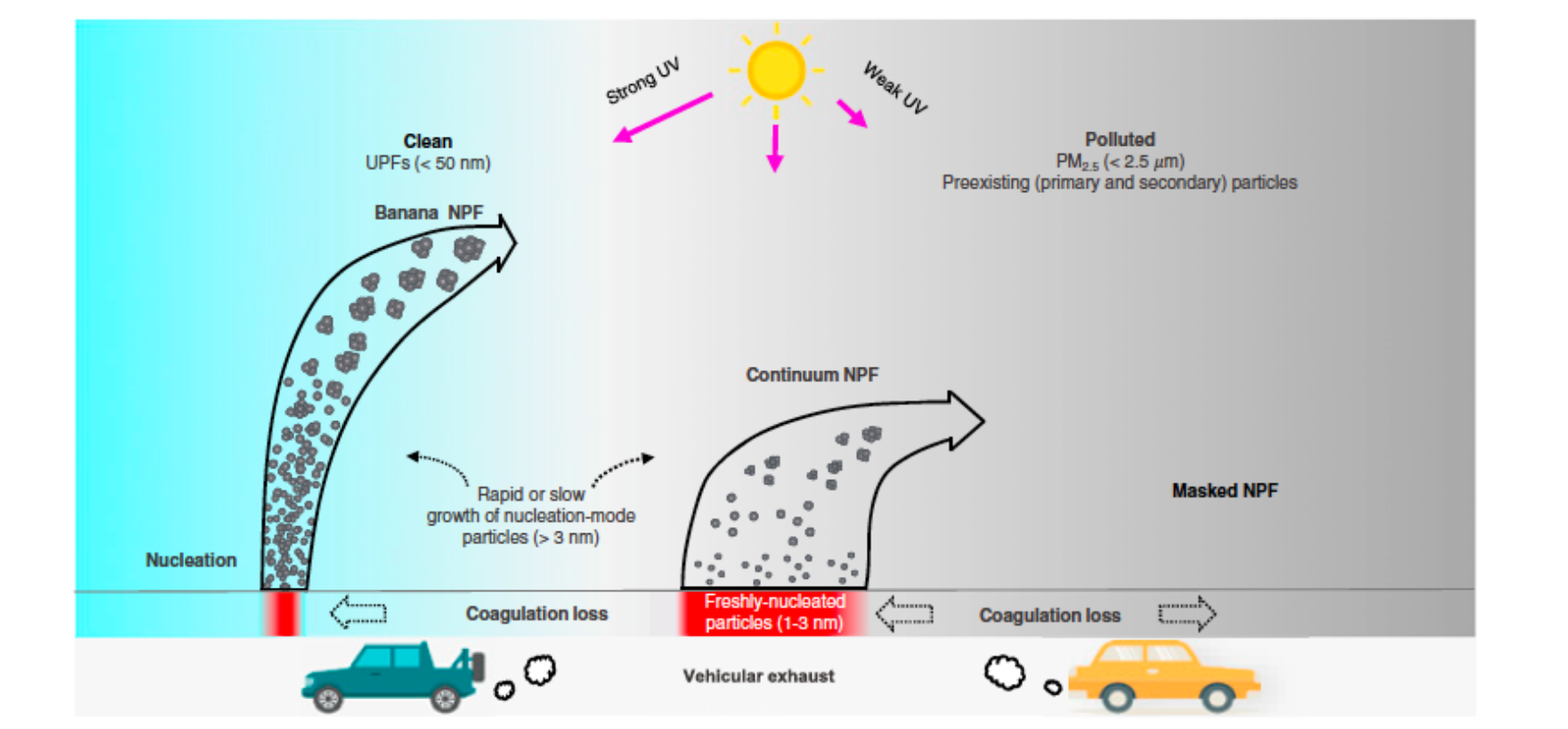
Song Guo, Min Hu, Jianfei Peng, Zhijun Wu, Misti L. Zamora, Dongjie Shang, Zhuofei Du, Jing Zheng, Xin Fang, Rongzhi Tang, Yusheng Wu, Limin Zeng, Shijin Shuai, Wenbin Zhang, Yuan Wang, Yuemeng Ji, Yixin Li, Annie L. Zhang, Weigang Wang, Fang Zhang, Jiayun Zhao, Xiaoli Gong, Chunyu Wang, Mario J. Molina, and Renyi Zhang
PNAS February 18, 2020 117 (7) 3427-3432; first published February 3, 2020
https://doi.org/10.1073/pnas.1916366117
Abstract
High levels of ultrafine particles (UFPs; diameter of less than 50 nm) are frequently produced from new particle formation under urban conditions, with profound implications on human health, weather, and climate. However, the fundamental mechanisms of new particle formation remain elusive, and few experimental studies have realistically replicated the relevant atmospheric conditions. Previous experimental studies simulated oxidation of one compound or a mixture of a few compounds, and extrapolation of the laboratory results to chemically complex air was uncertain. Here, we show striking formation of UFPs in urban air from combining ambient and chamber measurements. By capturing the ambient conditions (i.e., temperature, relative humidity, sunlight, and the types and abundances of chemical species), we elucidate the roles of existing particles, photochemistry, and synergy of multipollutants in new particle formation. Aerosol nucleation in urban air is limited by existing particles but negligibly by nitrogen oxides. Photooxidation of vehicular exhaust yields abundant precursors, and organics, rather than sulfuric acid or base species, dominate formation of UFPs under urban conditions. Recognition of this source of UFPs is essential to assessing their impacts and developing mitigation policies. Our results imply that reduction of primary particles or removal of existing particles without simultaneously limiting organics from automobile emissions is ineffective and can even exacerbate this problem.
